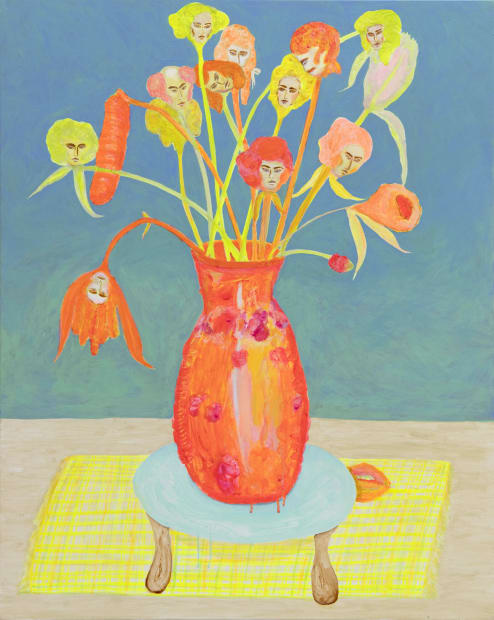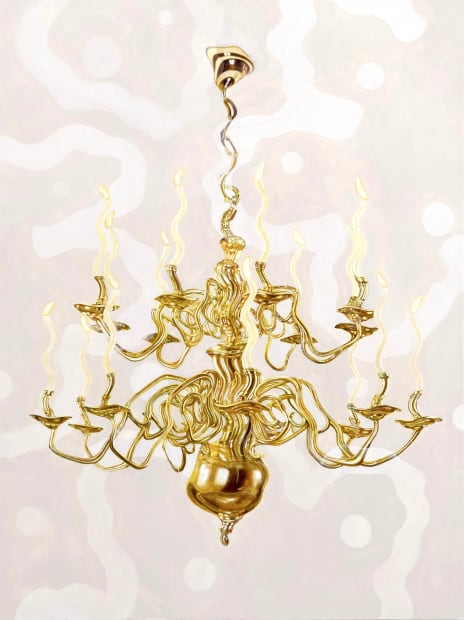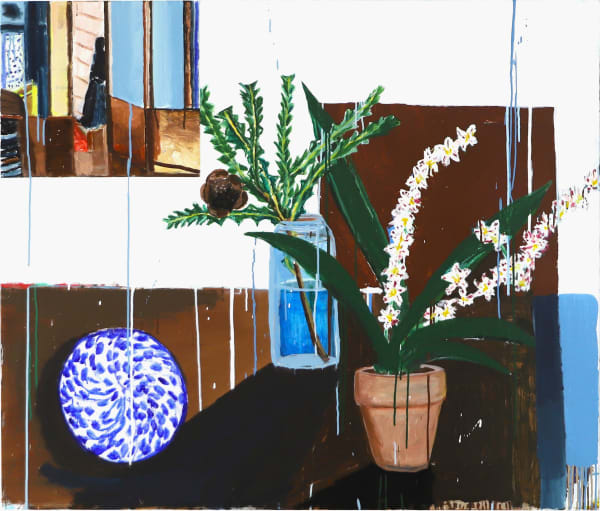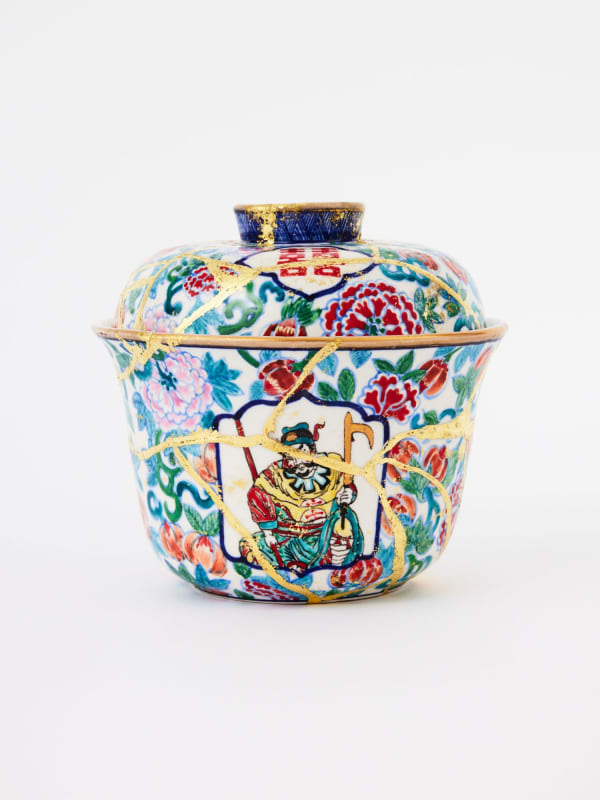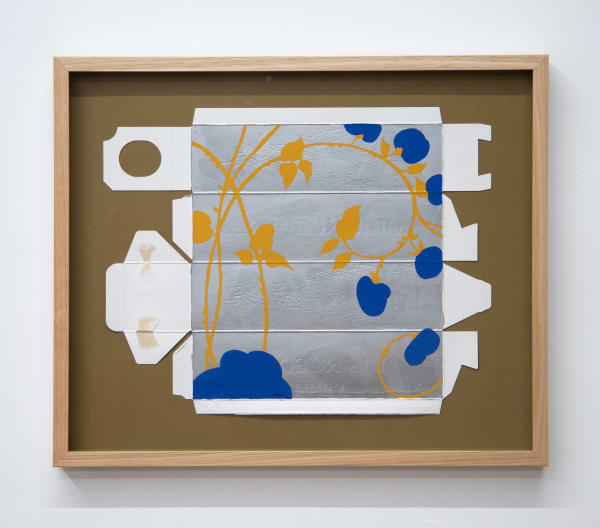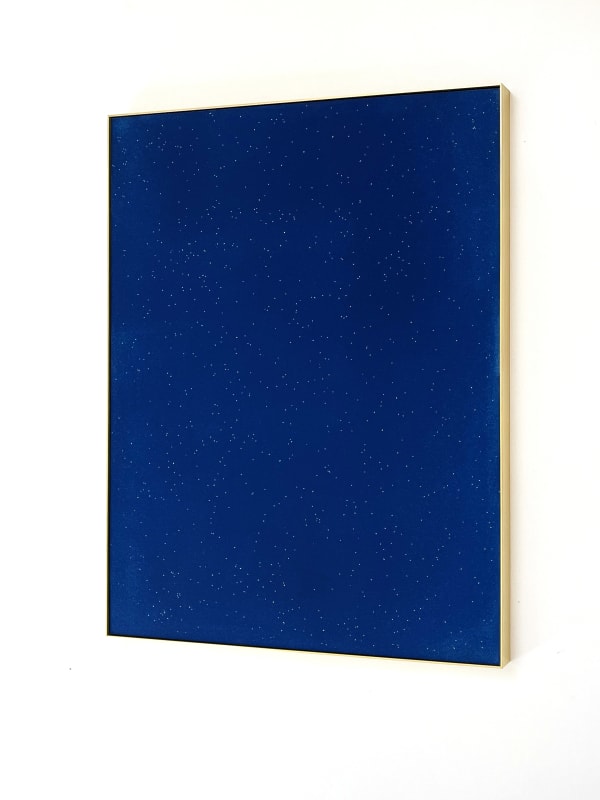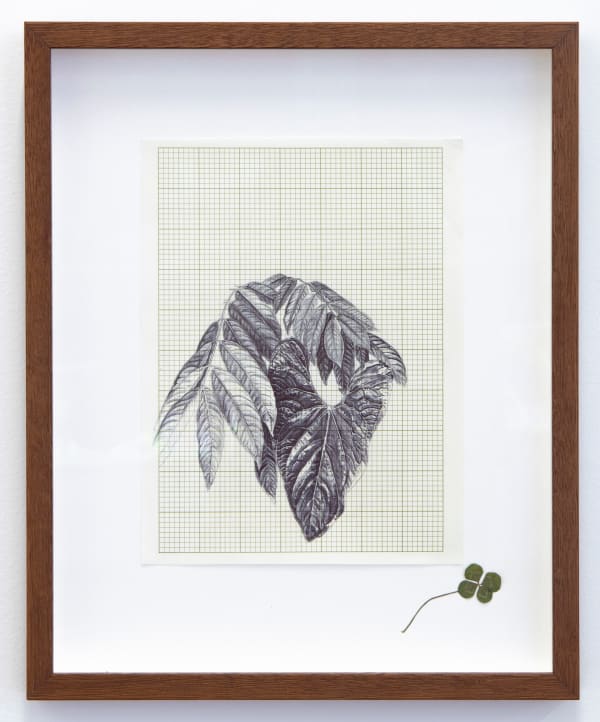-
The exhibition The Interior invites viewers into a world of intimate spaces, where the boundaries between the interior and the exterior blur. Through diverse mediums and artistic practices, this exhibition explores how our internal environments, both literal and metaphorical, shape and reflect our experiences, memories, and connections to the world around us.
-
Joan Ross’ still life Pollination of a Nation subverts the traditional floral arrangement by replacing flower heads with the heads of colonial men. This surreal transformation immediately disrupts expectations, infusing the genre with political and historical critique.The title, Pollination of a Nation, reinforces the metaphor of colonial spread, likening the forced establishment of European presence to the natural process of pollination. However, rather than fostering organic growth, the artwork implies a more insidious form of propagation — one that reshapes and dominates the landscape.
-

-
Joan Ross Bold and experimental, Joan Ross' practice investigates the legacy of colonialism in Australia with a particular focus on reconfiguring the colonial Australian landscape and drawing attention to the complex and ongoing issues surrounding the effects of globalisation and colonisation.
-

-
Thea Anamara Perkins ‘It’s about taking charge of representation – I find that painting is a very simple and direct way of communicating things that I want to say.’
-
Savannah Jarvis’s work examines how familiar spaces can become unsettling. Depicting a once-comforting home, it transforms into a place of unease, with warped walls and untrustworthy fixtures like chandeliers and fireplaces. This shift mirrors the human body’s potential to feel unfamiliar or even hostile when burdened with the challenges of inhabiting the chronically ill body, architecture and corporal forms suddenly realised to be not as secure as they seem.
-

-
Savannah Jarvis Savannah Jarvis is an emerging painter from Brisbane.
Join Savannah's preview list / Find out more.
-
-
Natasha walsh 'My practice thrives on experimentation... I actually don’t enjoy confronting my reflection. At times the vulnerability of this can be very disheartening and unpleasant.'
-
Sally Anderson’s paintings merge personal, domestic, and maternal experiences with art historical references to explore memory and meaning. By recontextualising intimate moments and second-hand landscapes, she highlights the entanglement of motherhood, domesticity, and creativity. Oscillating between abstraction and representation, Sally’s work uses still-life and landscape motifs as symbols of containment and care.
-
-
Sally Anderson 'Deep within, her paintings carry autobiographical elements heavy with memory and meaning...'
-

-
Holly Anderson From across a room, Holly Anderson’s paintings appear to swim in the brightness of a clear sky. Bursts of sunlight populate familiar subject matter – interiors, figures, skies, and water are monochromic planes pierced with white light...
-
-
Casey Chen Casey Chen’s ceramics practice references historical illustrations from an eclectic mix of folklore, mythology and pop culture.
-
-
VIpoo Srivilasa 'Central to Vipoo Srivilasa’s creative practice is art’s ability to elicit the sense of joy, whilst also acting as a conduit for serious issues...'
-
In contrast, Claire Healy & Sean Cordeiro’s works reference the iconic wallpaper designs of Florence Broadhurst, exploring the intersection of design, history, and cultural identity. Their immersive installations challenge the boundaries of interior design by using wallpaper not only as a decorative element but as a medium through which they engage with notions of personal and collective memory, pattern, and repetition. Their works serve as a visual commentary on how our environments are layered with both aesthetic pleasure and cultural meaning.
-
-
Claire Healy & Sean Cordeiro Working as a collaborative duo since 2001, Claire Healy & Sean Cordeiro's practice reflects a preoccupation with the dynamics of global mobility, fallout of consumer society, and contemporary notion of home.
-
Tom Blake Tom Blake’s practice draws on fragmented moments, looped imagery and recurring motifs as potential sites for contemplating the psychological, architectural and technological frameworks that surround us.
-
Neva Hosking’s works, drawn inside her greenhouse, delve into the relationship between nature and human habitation. These botanical-inspired pieces draw attention to the delicate balance between cultivated space and organic growth, highlighting the ways in which nature and human intervention coexist within enclosed environments. Hosking’s exploration of the greenhouse as a curated, yet fragile, ecosystem invites reflection on our role in shaping and controlling the spaces we inhabit.
-
-
Neva Hosking Taking her cues from the rich visual delights of her immediate environment, Neva’s still lifes are semi-autobiographical, displaying in their subject matter and aesthetic structure cues from her personal life.
-
Christopher Zanko’s tile works further enhance this dialogue on domesticity and space. His intricate and tactile ceramic pieces combine form, texture, and color, evoking a sense of permanence and ritual. These works act as markers of place, drawing attention to the often-overlooked details within the architecture of our surroundings, offering a modern twist on age-old traditions of interior decoration.
-
Christopher Zanko 'Zanko creates permanence through the action of carving and simultaneously gives these homes and memories an enduring place to survive.'
-
Together, these artists offer a multifaceted exploration of the interior – whether domestic, personal, or botanical – revealing the profound ways in which our environments inform our sense of self, place, and memory. The Interior is an exhibition that invites us to reconsider the spaces we occupy and how they shape our narratives.

